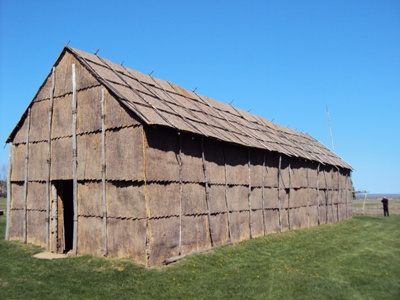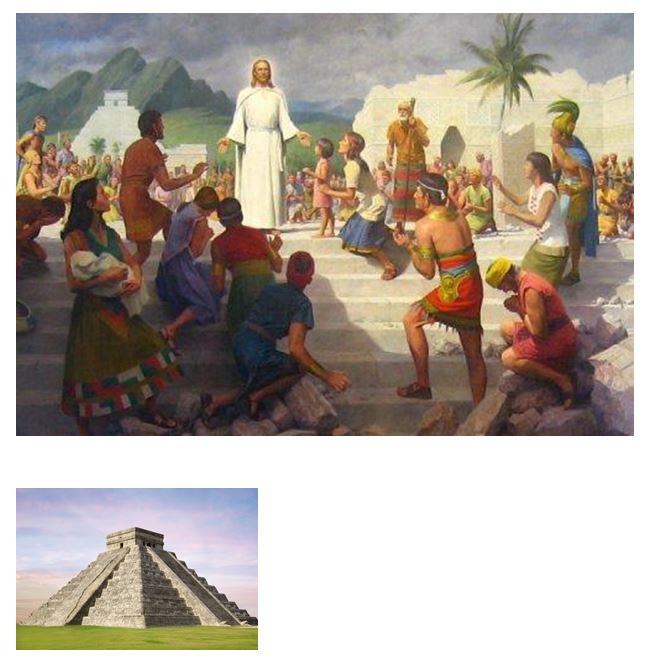|
The
sacrament meeting speaker was a service missionary recently welcomed to our
ward. He said he’d worked many years as a quality engineer and been involved
in building temples for the Church. He assured the congregation that he knew
something about the subject he was going to talk about. His talk would be based on some
renowned Church member’s (leader’s?) remarks on temple foundations - in
particular, Mayan temples.
After
the meeting ended, I went up on the stand and asked the service
missionary why he didn’t base his talk on a scriptural temple - like the
temple
of Solomon? He admitted
that he could have done so, but that renowned brother so and so, whose talk
he chose to rely on, chose Mayan temples.
I asked
the good brother to do something for me: I asked him to open his Bible, and
come up with an estimate of how many man-years it took to build Solomon’s
temple. I assured my brother that since he was an engineer, and since the
information is in the Bible – he could do it!
The Times and Seasons
“EXTRACT” Article
In the
fall of 1842, approaching the time when the Prophet Joseph Smith,
overwhelmed with “a multiplicity of other business”, resigned as official
editor of the Times and Seasons newspaper, a series of sensational
articles were published which featured excerpts from
John Lloyd Stephens’ 1841 bestseller
Incidents of Travel in Central America.
The
first of these newspaper articles appeared September 15, (Times and Seasons,
Vol. 3, No. 22, pp. 911-915), under the banner, “TRUTH WILL PREVAIL” and the
header “EXTRACT”. After featuring an extract from Stephens’ book, describing
Central American stone ruins, the following remarks were added by an unknown
party with the good intent of promoting faith in the Book of Mormon:
“…It affords great joy to
have the world assist us to so much proof, that the most credulous cannot
doubt. We are sorry that we could not…give the necessary cuts referred to in
the original. Let us turn our subject, however, to the Book of Mormon, where
these wonderful ruins of Palenque
are among the mighty works of the Nephites:-and the mystery is solved.”
(The acting editor was John Taylor, Wilford Woodruff was called to assist)
Ignoring,
or oblivious to Stephens’ conclusion that the Central American ruins were relatively recent
works, the EXTRACT article proceeds to quotes page 72 of the Book of Mormon
(2 Nephi 5:13-16, in the current edition) as if these verses somehow account
for stone ruins in Central America. These verses of scripture actually state
that Nephi taught his people how to work with metals and all manner of wood,
and that Nephi built a temple in form like the temple built by Solomon.
Because
Nephi was limited to certain materials, the American temple “could
not be
built like unto Solomon’s temple.” But the “manner” of the structure
resembled the Jerusalem temple. There is
no mention of stone masonry at all in these verses. In fact, there is no
scriptural mention of any temple or synagogue
( מוֹעד) made of hewn stone in Book of
Mormon America. We know in fact that the Nephites used timber to construct
their temples.
(Helaman 3:9)
The
temple built by Solomon, was a magnificent timber, metal and stone
construction. According to scripture, it took seven years to build.
(1 Kings 6:38)
Solomon
employed 10,000 lumbermen in
Lebanon, 70,000 bearers of burdens, 80,000
quarrymen and 3,300 (3,600?) supervisors.
(1 Kings 5:8-18,
2 Chronicles 2:17-18, KJV) Ignoring the supervisors and 20,000 lumbermen left at home,
and assuming conservatively that Solomon had two thirds of his workforce
engaged in other building projects, the effort gone into building the House
of the LORD may be estimated at about 370,000 man-years.
Nephi
had Zoram, Sam, Jacob, Joseph, his sisters and some others to help him build
a temple in America.
(2 Nephi 5:6) Let us generously suppose that in time, Nephi had hundreds of
able bodied workers. With a workforce of hundreds, a stone temple like the
one at Jerusalem,
would still have taken more than a lifetime to complete! Scripture indicates
that the American temple was completed in Nephi’s lifetime, possibly prior
to the first war with the Lamanites.
(2 Nephi 5:27-28,
34, consider also
1 Kings 5:3-5)
Moreover, the temple was not the only Nephite building project:
“And I did teach my people to build buildings, and to work in all manner of
wood…” (2 Nephi 5:15) Nephi was divinely trained in ship building. He knew
wood and metal working. There is no mention of his becoming a skilled stone
mason.
What
Nephi says is that he “did build a temple…after the manner of the temple of
Solomon save it were not built of so many precious things; for they were not
to be found upon the land…” Do “precious things” refer only to decorations?
Concerning the House of the LORD, the Bible records, “…the king commanded,
and they brought great stones, costly stones, and hewed stones, to lay the foundation of the house.”
(1 Kings 5:17, KJV)
Notice that “and” in the translated verse, is italicized, meaning that it
isn't really present in the Hebrew text.
In other words, the “costly stones” are the “hewed stones”
mentioned in the text.
What is more, an LDS edition footnote refers
to
2 Nephi 5:16! In other words,
“costly stones” for the foundation were
among the “precious things” omitted by Nephi in his construction. The Hebrew
adjective translated “costly” in this case, comes from the root
“yaqar” (יקר)
meaning “precious”, “prized”, “weighty”, “esteemed”. Thus some of
the precious and weighty things that Nephi did without, were not merely
ornamental, they were the very foundations of massive stone structures.
(1 Kings 7:8-11)

Native American Long House - Western NY
Consider Haggai 1:8;
2:3,
9
Temples dedicated to the God of Israel do not required massive stone
foundations. The temple built by Solomon was patterned
after the smaller, portable tabernacle of the congregation. The only stone
structures built by Nephites, mentioned in the Book of Mormon, were
defensive stone walls, and there is no indication that these defenses were
made of hewn stone:
“…Moroni on the other hand, had been preparing…
Yea, he had been strengthening the armies of the Nephites, and erecting
small forts, or places of resort; throwing up banks
of earth round about to enclose his armies, and also building
walls of stone to encircle them about, round
about their cities and the borders of their lands; yea, all round about the
land.”
(Alma 48:7-8)
In
contrast to the anonymous September 15, EXTRACT article on Stephens’
travels, the July 15, editorial on Josiah Priest’s AMERICAN ANTIQUITIES (by
Joseph Smith, signed with his “ED”) cites North American Mound-builder
evidence supporting the Book of Mormon:
“…forts,
tumuli, roads, wells, mounds,
walls enclosing between one and two hundred,
and even five hundred acres of land; some of them
stone, and others of earth, twenty feet thick, and exceeding
high…works requiring too much labor for Indians ever to have performed.”
(Times
and Seasons, Vol. 3, No. 18, pg. 858)
In the
AMERICAN ANTIQUITIES article, the editor Joseph Smith corroborates the
account of Nephi teaching wood and metal working to his people, and the
building of a temple, with archeological finds in temperate North America -
Mound-builder country.
Apparently Joseph Smith agreed with
Josiah Priest,
John Lloyd Stephens and
other authors of the time, that the publicized stone ruins of Central
American were comparatively recent works (not truly ancient) and that
descendants of ancient peoples eventually migrated from temperate North
America into Central America and beyond.
(See V.
Coon, CHOICE ABOVE ALL OTHER LANDS, Chapter Three “Unsigned Articles
and a Popular Book”; also
Joseph Smith, Josiah Priest and the Times and Seasons)

The
temple of
Kukulkan,
ostensibly posing as the Book of Mormon’s Bountiful Temple,
in the background of a popular LDS mural
When do
you suppose
the temple of Kukulkan was constructed; sometime in or before the first century AD? It was actually constructed
sometime between the 9th and 12th centuries AD. So
the “Christ in America”
painting doesn’t really depict a scene from the Book of Mormon.
Maybe we can think of it as representing a visit from
Kukulkan/Quetzalcoatl to the Maya many
centuries AD - many centuries after Messiah's visit to the Nephites.
We should also not be ignorant of the despicable acts of human sacrifice
that took place at Mayan temple sites.
Consider
Exodus 20:24-26, and
Joshua 8:30-31:
24
¶ An altar of earth thou shalt make unto me, and shalt
sacrifice thereon thy burnt offerings, and thy peace offerings, thy sheep,
and thine oxen: in all places where I record my name I will come unto
thee, and I will bless thee.
25
And if thou wilt make me an altar of stone, thou shalt not build
it of hewn stone: for if thou lift up thy tool upon it, thou hast
polluted it.
26
Neither shalt thou go up by steps unto mine altar, that thy
nakedness be not discovered thereon.
According to the Joseph Smith Diary, recorded by Willard Richards, the Prophet Joseph Smith understood (ostensibly from his study
of the scriptures) that an altar of man hewn stones was an abomination to the LORD.
Neither was the hammer, or axe, or any tool of iron to be heard in the construction of the House of the LORD.
(1 Kings 6:7)
According to the diary, Joseph Smith described himself as “.. a rough stone,
the sound of the hammer & chisel was never heard on me. nor will ever be. I desire the learning & wisdom of heaven alone.” The Joseph Smith Diary
goes on to state, “... if Christ should and come and preach such rough things as he preached to the Jews ... this Generation would reject
reject him for being so rough.” (The Words of Joseph Smith,
compiled by Andrew F. Ehat and Lyndon W. Cook, pp. 209 - 210.)
Talks in church should stay close to scripture. Speakers should be less trusting of other
church affiliated sources.
Vincent Coon
וִינְסֶנט כּוּן
© Copyright 2015
|